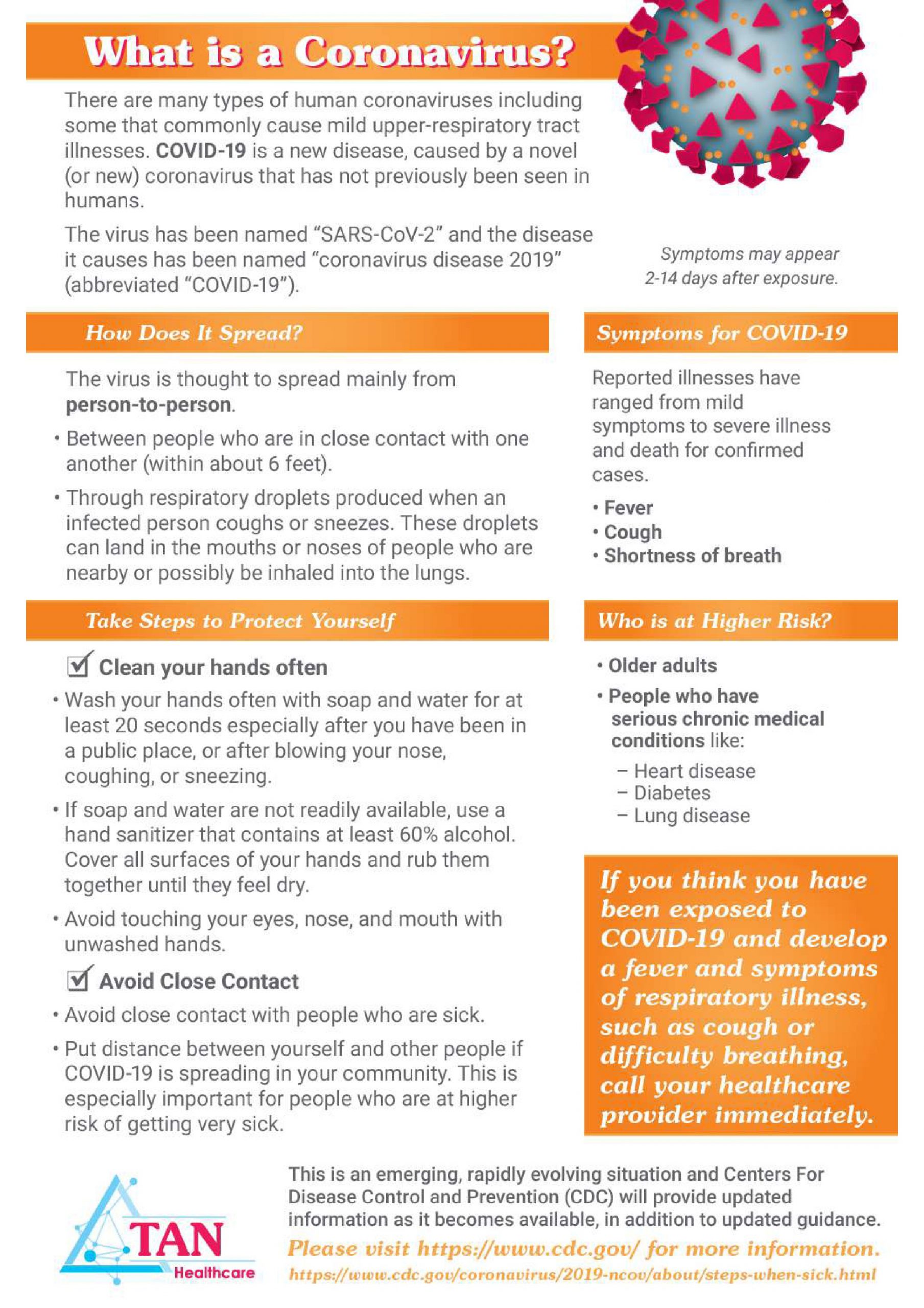What is a Coronavirus?
There are many types of human coronaviruses including some that commonly cause mild upper-respiratory tract illnesses. COVID-19 is a new disease, caused by a novel (or new) coronavirus that has not previously been seen in humans.
The virus has been named “SARS-CoV-2” and the disease it causes has been named “coronavirus disease 2019” (abbreviated “COVID-19”).
How does it spread?
• The virus is thought to spread mainly from person-to-person.
• Between people who are in close contact with one other (within about 6 feet).
• Through respiratory droplets produced when an infected person coughs or sneezes. These droplets can land in mouths or noses of other people who are nearby or possibly inhaled by lungs.
Symptoms of COVID-19
Reported illnesses have ranged from mild symptoms to severe illness and death for confirmed cases.
• Fever
• Cough
• Shortness of breath
Take steps to protect yourself
• Clean your hands often
• Wash your hands with soap and water for at least 20 seconds especially after you have been in a public place , or after blowing your nose, coughing, or sneezing.
• If soap and water are not readily available, use a hand sanitizer that contains at least 60% alcohol. Cover all surfaces of your hands and rub them together until they dry.
• Avoid close contact
• Avoid close contact with people who are sick.
• Put distance between yourself and other people if COVID-19 is spreading in your community. This is especially important for people who are at higher risk of getting very sick.
Who is at higher risk?
• Older adults
People who have chronic medical conditions like:
• Heart disease
• Diabetes
• Lung Disease
If you think you have been exposed to COVID-19 and develop a fever and symptoms of respiratory illness, such as cough or difficulty breathing, call your healthcare provider immediately.
This is an emerging, rapidly evolving situation and Center For Disease Control and Prevention (CDC) will provide updated information as it becomes available, in addition to updated guidance.







